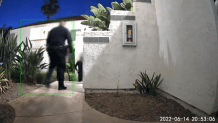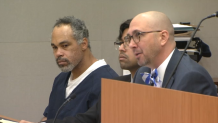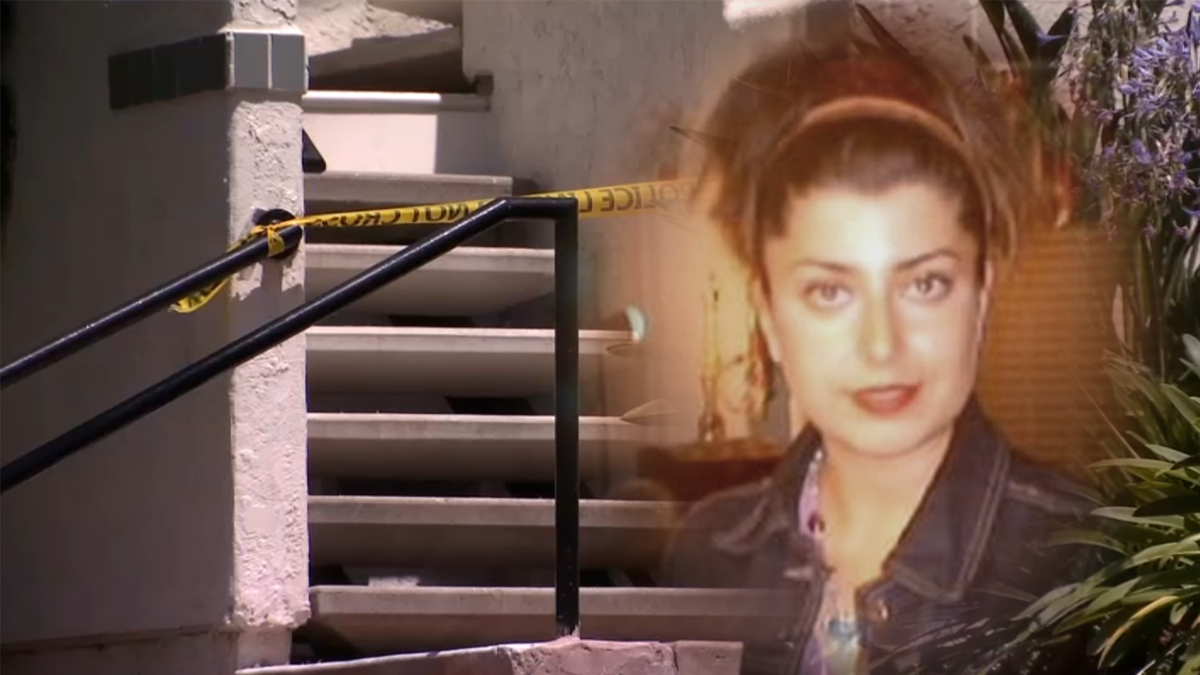During opening statements on Monday morning, the prosecution and defense agreed on some of the biggest facts of the case. Both say Parrish Chambers had been drinking on June 14, 2022, when he climbed Connie Dadkhah’s condo balcony, smashed his way inside through a sliding glass door and violently attacked her.
But their narratives diverge on what happened next. The prosecution says Chambers’ attack was fatal, causing a brain bleed.
“He beat her, and he beat her and he beat her to death,” deputy district attorney Martin Doyle told the jury. “It was not a quick death or a gentle one."

Public defender Abe Genser said she survived the attack. Afterward, he said Chambers reconciled with Dadkhah and the two smoked meth and had sex. Genser said it was her drug use, which continued into the early morning hours, was the primary factor in her death. Moreover, he says Chambers was so drunk that he doesn’t even remember the attack and didn’t intend to kill her.
“At the end of this trial, after you’ve seen all the evidence and heard from all the experts, you are going to be tasked with answering the question: Why?” Genser said. “And it’s not going to be because Mr. Chambers wanted someone he loved dead. The answer is going to be because he was incredibly intoxicated. He didn’t know what he was doing and did something he is going to regret for the rest of his life.”

This story created headlines not only for the brutal nature prosecutors say Dadkhah died, but also for the scrutiny it raised for the emergency response of the San Diego Police Department. The prosecution addressed that directly during opening statements.
“I wish I could tell you that the San Diego Police Department did a good investigation in this case,” Doyle said. “They did not. In fact, many of the witnesses who ordinarily would be allied witnesses of me, will be evasive and uncooperative. They screwed up, and they know it. They failed Connie Dadkhah on June 14, 2022.”
Click here to read up on what happened during the other days of the murder trial. You can also watch replays of each day's proceedings the weekday after they happen, starting at 11:30 a.m.
Background on the murder case

On the morning of June 15, 2022, prosecutors say Chambers emerged from Dadkhah's condo, spattered with her blood. They say he flagged down a neighbor to call 911 to report that she was dead inside. He was taken into custody soon after and charged with her murder. He’s pleaded not guilty.
Police dispatch records show around 7 p.m. the night before, Dadkhah's neighbors began calling 911. They begged police to get there quickly, reporting that a belligerent man was trying to break into a woman’s condo. Initially, the call wasn’t prioritized. About an hour later, callers had new information to tell dispatchers: the man had scaled a wall to her second-floor balcony and smashed his way inside through a sliding glass door. While police upgraded the call to a higher priority, it took another 45 minutes for officers to arrive at the complex.
Those same dispatch records, along with court filings from prosecutors, reveal officers tried to make contact with Dadkhah by calling her phone, knocking on her door and using a loudspeaker. But officers left the scene 15 minutes later, after failing to make contact with anyone inside. There’s no record of Dadkhah calling police that night.

In defending their decision not to force entry the night before, police told NBC 7 Investigates they had reason to believe that Chambers lived there. That was based on a dispatch record accessed by responding officers. Police also told NBC 7 the decision to force entry into anyone’s home shouldn’t be taken lightly and is among the highest level of legal standards they operate under.
But Chambers didn’t live there, though NBC 7's investigation revealed a history between the two. Court filings show that included an incident in 2020, when Chambers was convicted of vandalism. The judge ordered Chambers to stay away from Dadkhah. That order was still in effect when Dadkhah died.
Previous coverage:
Prosecution begins calling witnesses
Following opening statements, the prosecution called eight witnesses before time ran out for the day. That included people who lived in the condo complex. Four neighbors told the court about past incidents they witnessed between Chambers and Dadkhah. They described some as screaming matches between the pair, while describing others as much more violent.
“He went for her throat, and she was trying to get away. She was so much smaller,” a neighbor testified. “She was trying to get away from him … He was loud. He was without restraint, compared to other times."
A former neighbor named Adrian Van Der Walt lived at the complex the morning Dadkhah's body was discovered. He testified about helping Chambers call 911 on June 15 to report that Dadkhah wasn’t breathing. He told the court Chambers was spattered with blood and seemed emotionless.
Sara Shirazi lived right under Dadkhah's unit and testified about all the calls she made to police on June 14.
“I was afraid he was going to break the windows and hurt the woman upstairs,” Shirazi said.
Prosecutors played out more than a dozen videos from Shirazi’s personal security camera, which showed Chambers' behavior on June 14. In the videos, he’s seen walking to Dadkhah's unit while holding a half-filled bottle of vodka. At times, he’s seen yelling and gesturing wildly. The angle of the camera didn’t capture Chambers climbing the balcony and smashing his way inside the unit.
Her camera also captured an incident in April of 2022, which appears to show Chambers assaulting Dadkhah outside her unit. A couple of hours later, the video showed police interviewing Dadkhah and taking photos of her neck and arms.

Prosecutors also questioned San Diego Fire-Rescue paramedic Eva Santillan about what she saw when her team arrived first at the scene the morning of June 15. She testified that it was obvious Dadkhah had died recently and revealed the steps that were taken to preserve the crime scene evidence for police.
Former San Diego police officer Ralson Compton was also among the first to arrive at the condo complex. He and the jury were shown an array of crime scene photos. That included photos of Dadkhah's body, lying on the living room couch covered with a blue sheet. Her face and body were pale, and there were signs of injuries to her face and neck.
The crime scene photos also showed the home was a complete mess, piled high with random belongings, dirty clothes and trash. The living room was also littered with broken glass from the smashed-in sliding door.
There were also numerous pictures of blood spatter throughout the home. That included in the living room and the bathroom. During opening statements, public defender Genser told the court all the blood that was tested came back positive for Chambers, not Dadkhah. However, that evidence has yet to be presented in court during testimony.
The final witness of the day was Denise Martinez with the SDPD. At the time of Dadkhah's death, she was working as a crime scene specialist. It was her job on the morning of June 15 to catalog evidence from Chambers' body. Pictures were taken of all his tattoos as well as of numerous injuries. That included a few deep cuts to his hands, arms, neck and chest. She then took DNA samples from his mouth and collected hair samples and fingernail scrapings.
Following that, Martinez returned to the condo and took dozens of photos of every room in the house. Prosecutors went through the photos one by one, helping paint a full picture of the unit and the crime scene for jurors. Martinez will return to the stand Tuesday to continue her testimony.
Other charges in the case
In addition to the murder charge, prosecutors also charged Chambers with three other crimes where they say Dadkhah was his victim. That includes two counts of battery and one count of false imprisonment. He’s pleaded not guilty to those counts as well.
The exact nature of their relationship isn’t clear, but Dadkhah's friends say she met Chambers through her volunteer work with mental health outreach. They say he became smitten with her, tracked down her address and constantly visited despite repeated requests that Chambers leave her alone.

Court records indicate that Chambers’ public defender intends to paint a different narrative during the trial. One that alleges the two had a tumultuous sexual relationship that included drug use.



